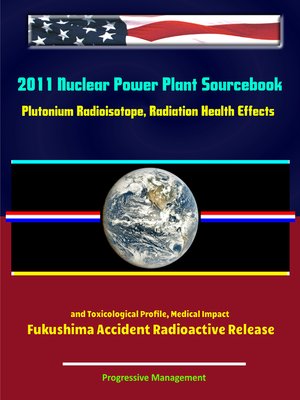2011 Nuclear Power Plant Sourcebook
ebook ∣ Plutonium Radioisotope, Radiation Health Effects and Toxicological Profile, Medical Impact, Fukushima Accident Radioactive Release
By Progressive Management

Sign up to save your library
With an OverDrive account, you can save your favorite libraries for at-a-glance information about availability. Find out more about OverDrive accounts.
Find this title in Libby, the library reading app by OverDrive.



Search for a digital library with this title
Title found at these libraries:
| Loading... |
Plutonium, a radioisotope with significant health implications that can be generated by nuclear power plant accidents and meltdowns, is fully covered in this authoritative, 300 page collection of official documents with details about the health and medical impacts of this dangerous radioactive element. Mixed oxide fuel (MOX) used in one of the reactors at the Japanese Fukushima Power Station contains plutonium. A complete toxicological profile from the Agency for Toxic Substances and Disease Registry (ATSDR) is included.
Plutonium is a silvery white metal that exists as a solid under normal conditions. It is produced when uranium absorbs an atomic particle. Trace amounts of plutonium occur naturally, but large amounts have been produced in nuclear reactors. Trace levels of plutonium can be found in the environment, from past nuclear bomb tests, in several forms called isotopes. The most common plutonium isotopes are plutonium-238 and plutonium-239. Plutonium undergoes radioactive decay. In this decay process, energy is released and a new product is formed. The energy released is called radiation. When plutonium decays, it divides into two parts-a small part that is called "alpha" radiation and a large part called a daughter. The daughter is also radioactive, and it, too, continues to decay until a nonradioactive daughter is formed. During these decay processes, three types of radiation are released-alpha, beta, and gamma. Alpha particles can travel only a short distance and cannot travel through your skin. Beta particles can penetrate through your skin, but they cannot go all the way through your body. Gamma radiation can go all the way through your body.
This is a privately authored news service and educational publication of Progressive Management.






